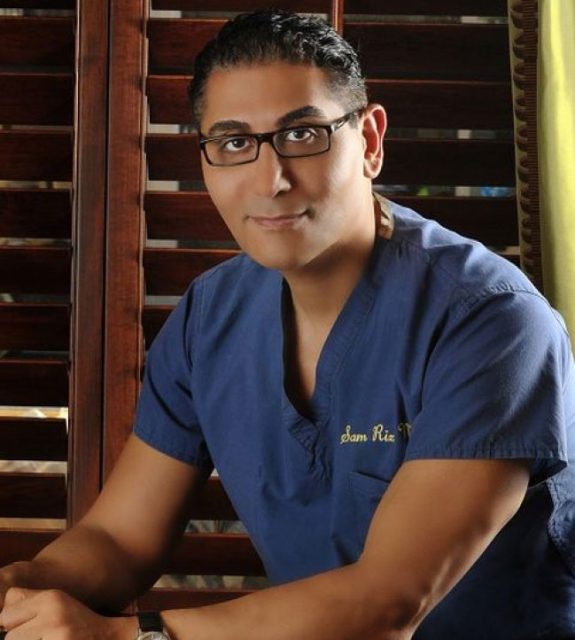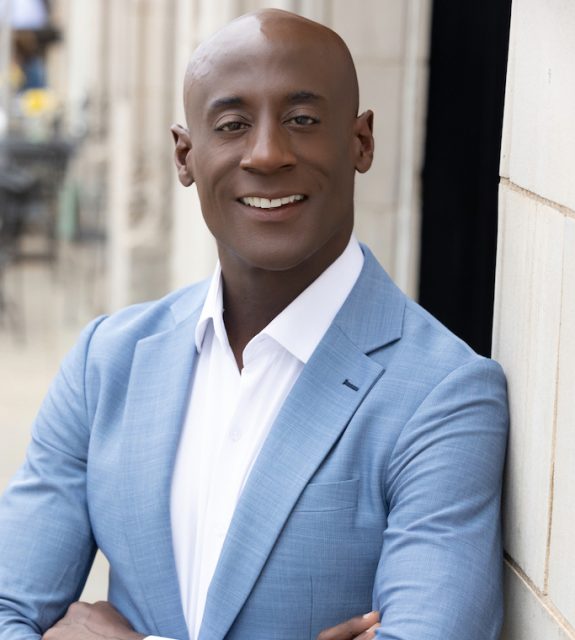New York City based advanced certified Jivamukti teacher, Matthew Thomas Lomabardo, talks about yoga, starting your practice, and your journey to contentedness.
How did you discover your passion for yoga?
I have always been interested in spirituality, in religious philosophy, and in the transformative sciences. Yoga is something that I practiced for a long time, without thinking that I would one day be teaching other people. It is a combination of so many artistic, creative, and self-knowledge illuminating practices.
I have now been teaching yoga for thirteen years, and I have taught thousands of people: everyone from babies, to the elderly, to people brand new to yoga, to celebrities, and really everyone in between. I have taught in the United States, Europe, on a lot of retreats, and at many teacher trainings.
What type of yoga do you teach?
I am an advanced certified Jivamukti teacher, with a minor in Tibetan Buddhism.
Where do you teach?
I currently teach at Jivamukti NYC, Pure Yoga East and East, and in Brooklyn.
What is your favorite part of the workday?
My favorite part of the workday is getting up in the morning, knowing that I am going to spend the day doing something that I enjoy. Teaching yoga can be incredibly exhausting, but I know that I am going to interact with interesting people for my whole day, which is so fun.
What is the most rewarding part of your job?
I have experienced and seen people make great progress and great breakthroughs in yoga, in meditation, and in personal life stuff. The practice affects all part of your life.
I have seen things happen with people, whom I underestimated at the beginning, and I am constantly surprised and thrilled, when these huge changes happen and the types of people that they happen to. There is really no hype: yoga has healing benefits for everyone and every kind of person. My favorite part of my job is that I can see that happening over and over again.
What is the most challenging part of your job?
It can be incredibly challenging to ask people to do things with their bodies and then not to take it personally if they don’t, in a short period of time. In the practice of yoga, we are working with the mind-body connection, and the ego is a big part of that. The ego can really get in the way for both the student and the teacher. I know that, when someone comes to a class, they are working with a lot of things, their mind, and their body, and it can be incredibly challenging on all fronts. It clicks quickly for some people and not for others.
What is your favorite thing about yoga?
You get to work barefoot. Yoga is a constantly evolving, life-long practice. I find it infinitely interesting. I am talking about all parts of yoga, not exclusively asana, the postures that people mostly think of as yoga. I am talking about the mind training, as well as the body conditioning.
Where do you recommend that someone brand new to yoga start his or her practice?
The best place to start your yoga practice is in your living room. Go on YouTube and find a five-minute video for beginners. Also, most places in the city accommodate people of all levels who have busy schedules. There are classes that are arranged for 45 minutes, for an hour, and for an hour and a half. You can find classes all around the city for short periods of time, but start out in your house. Watch a few videos, learn a few moves, and start right there.
How about meditation?
Start your meditation practice right where you are. Just start with one minute: sit in a comfortable chair, close your eyes, turn your phone off, put your hands in your lap, and just observe your sensations, your breathing, your body, your breathing, and your mind.
Starting a meditation practice is like starting an asana practice, or like starting a weight-training program. You start with small weights, and build up to bigger ones. You are really building a muscle up, when you are learning meditation. It needs to get to a point where it is really strong incrementally. People can do one or two minutes of meditation daily to begin, and that is great. You can practice for just one or two minutes for weeks. It is always interesting how longer time spans just appear for people after a bit of practice.
How often should someone practice yoga?
Everyone should remember that doing a little bit is important. Doing 20 minute of yoga is a yoga practice. It might scare people to think that they need to do an hour and a half or a three hour practice every day in order to have a practice, or that they need to wake up at 4 am to practice, but that is only one type of style of yoga. That is like saying that, because you like music, you are only allowed to listen to one type of music. There is a lot of variety in yoga, and the best part about it is that it is meant for living, working, breathing people with families and jobs. It is not about having to practice outside of your real life, but more about how you can include your life in the practice. That is the practice.
What advice do you give to your students most often?
The thing I say the most is: don’t listen to me, listen to your breathing, and move with your breathing. Pay attention to what you need. If you need to rest during a class, do that. If you want to go further during a class, do that. With asana, you can get fatigued. The teacher is pushing you in ways that you wouldn’t push yourself by yourself, but yoga is about an introduction to you, and spending time with yourself in a healthy way. The most important thing is to move with your breathing.
You may not like certain things that are offered in a class, but that is an important life lesson. It is like going to someone’s house, where they have made dinner for you. You eat what your host serves you. Your mind can come up with all sorts of reasons why you should leave or why you should not give it your best effort. I understand that, and that is a discipline too- to follow through. I did not get into teaching yoga to tell people what to do: I want people to discover their own health and wealth. In the reality of a yoga class, there is no real competition.
What is your biggest goal for your students?
If my students are going to take anything away from my class, I want them to learn to enjoy where they are in the world right now. They don’t have to go to India or anywhere else to have a fantastic, sublime, excellent, curious, happy life experience. I want my students to experience contentedness with their every day lives. It is not like we are not going to work to change and improve things, but I hope and I want people to have their eyes and ears open to all the good things in their own lives. I want my students to have more self-awareness, and the sensation they are involved with something courageous. Yoga takes a lot of work, but there are huge benefits. The benefit and value of a yoga practice is a space for your happiness and goodness to radiate out. Look for those things. You may not be perfect in a posture, but you really are.
























